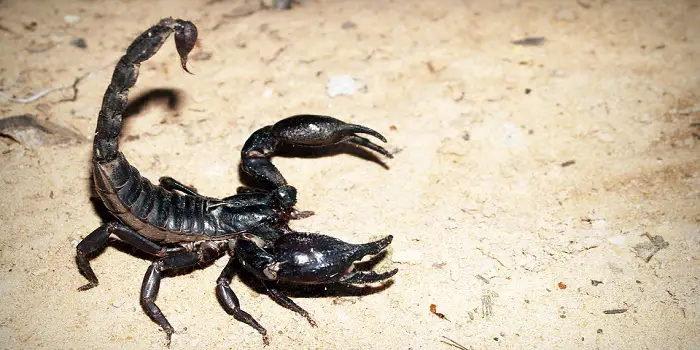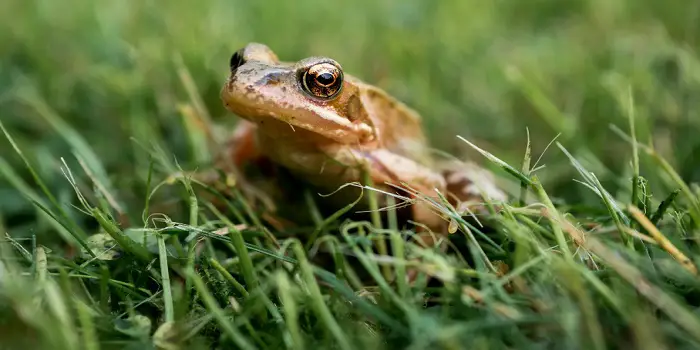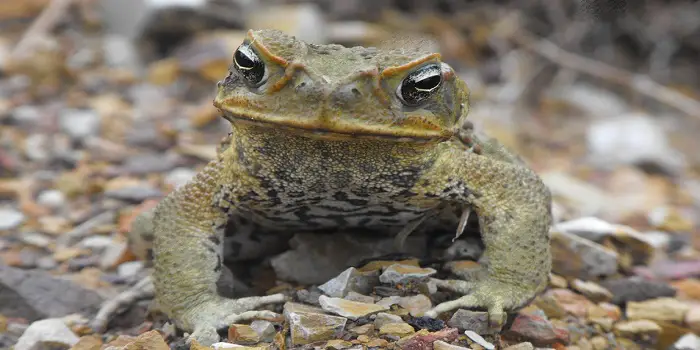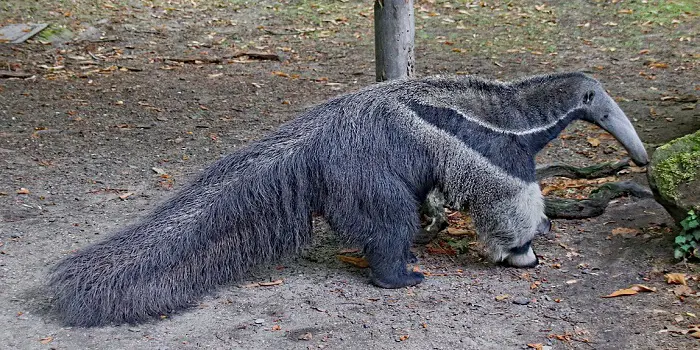
The general perception of anteaters is that they are a generally gentle bunch who takes ants for meals.
It’s true that usually, anteaters are not confrontational with humans, but like many animals, anteaters are territorial.
If anteaters feel that their turf is being intruded on, they will get protective and defend themselves in violent ways.
Although very rare, instances where humans got severely injured and even killed when approaching anteaters near their homes have been known to happen in the past.
So, you should treat anteaters as a pest rather than a pet; and try to avoid them getting near your homes.
In this article, we are diving deeper into understanding this seemingly gentle animal before you decide to make them pets (which people certainly do).
What Type of Animal is an Anteater?
Anteaters are toothless, insect-eating mammals found in tropical savannahs and forests in southern Mexico to Paraguay and northern Argentina.
Their vision is poor with a tapered skull and a long, tubular mouth, but hearing and smell are outstanding.
These crawlers may look cute and temperate, but don’t be fooled: They are as fierce as any predator when they need to fight back.
According to National Geographic, a full-sized giant anteater is completely capable of fighting off a jaguar or puma with its 4” long claws.
Sure, those that don’t belong to giant anteater species may not be able to fight off jaguars, but they might well be able to handle medium to big dogs, and their steely claws won’t be short either. So it’s probably best to stay on their good side.
To do so, stay proactive when approaching anteaters.
They are not naturally aggressive animals, and their ferocity tends to come out only when their territories are threatened.
Hence, stay away from their domains and only approach in neutral areas.
When threatened, they assume a standing position and use offense as defense, a pose expert call the classic anteater’s hug.
A deadly one at that. Don’t mistake the offensive posture as a friendly invitation to approach, respect their authority, and retreat.
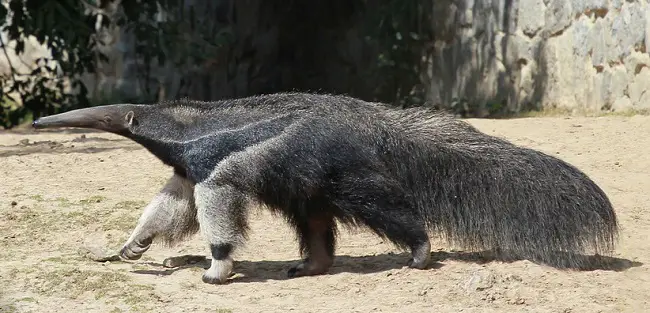
Is It Safe to Have Anteater as a Domestic Pet?
Maybe you’ve got an ant epidemic, or maybe you just think they’re cute.
Whatever the reason, some of you may be thinking about getting an anteater as a pet.
These mammals come in a range of sizes—from the jaguar-fighting giant anteaters that could grow to as big as a typical adult (though 7 feet long) to the pygmy/silky anteaters that stay around 14 inches at the longest.
However, you should be informed that giant anteaters are endangered animals classified as vulnerable species.
In between these two are the most common species as pets: the northern tamandua and southern tamandua. They grow to about 4 feet in length.
According to those who keep anteaters as pets, these cuties are as loving, expressive, responsive, and attention-needing as dogs…after training, that is.
Be that as it may, because these are wild animals and not specifically bred domestic species like dogs, most experts say they would probably be happiest living in their natural habitat, which, unless you live in the middle of nowhere and see these guys wandering around every day, is unlikely to be found in our own territories.
But if you do decide to go for it, here are some caveats you’d want to keep in mind.
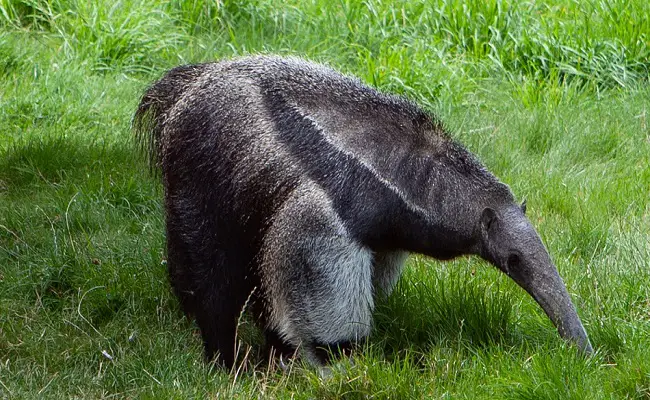
Things to Keep in Mind Before Getting Anteaters as Pets
1. Getting an anteater as a pet isn’t easy
We’re not talking about hard to find, exactly, because the tamandua and silky anteaters are sold as pets.
However, they are expensive, ranging from $3,500-$8,000 per purchase.
The pricing isn’t just for the rarity of this pet but also for training fees for the trainers to domesticate them, so they are fit for a home environment.
Another thing that makes anteaters harder than, say, dogs or cats to get is that you may need a special permit to own one. In the US, the laws regarding owning exotic animals (which includes anteaters) vary from state to state.
So do your research to find out what permits you need to get one as a house pet (if permitted by law at all).
2. Anteaters are nocturnal
Living in the more tropical regions made anteaters a bigger fan of the night than day.
That means when taken inside your home, they’re likely to be more active when you’re sound asleep. This makes taking care of their needs more challenging, requiring a whole lot of planning ahead.
And the needs themselves aren’t exactly low-maintenance, either.
3. Their living quarter can be high-maintenance
An anteater’s living quarters must be kept at around room temperature.
Too cold an environment can cause them to get sick, while one that’s too hot will send them into heatstroke.
In addition, like dogs and cats, anteaters need space to exercise and play.
If there aren’t any safe outdoor spaces available, you will need to get a big enough cage to put some logs inside for them.
But whenever you can, it might be a good idea to take them out for a stroll. That way, maybe they can find some ants and termites to feast on, too!
4. Anteater diet is hard to maintain
While water is an easy matter, their food source is more difficult to obtain, as you can imagine.
Luckily, although anteaters are insectivores, they do eat things like raw meat and fruits, so you will have some options other than ants and termites, which are their natural diets.
But keep in mind that anteaters are toothless, making it impossible for them to chew, so only feed them foods textured like baby food.
Alternatively, you might try to get some ants and termites as a treat meal for them, but know that anteaters eat quite a lot, and these insects aren’t easy to find, especially in large quantities.
5. Healthcare can be challenging
Anteaters can be sensitive to their environments, getting respiratory diseases when it’s cold and dry, as well as foot and skin problems because of low moisture.
But exotic pets mean exotic vets, who are hard to find.
A regular clinic is not likely to have doctors who know how to treat anteaters, but you can contact the local zoo for a reference because zoos usually keep giant anteaters.
So the best way to take care of them is to do your research, consult the doctors beforehand, and try to keep them from getting sick in the first place.
6. They may stink the whole place up
Yes, they have natural body odors, but that’s not what we’re talking about here.
We’re talking about the natural defensive gas they release when threatened, much like skunks, but more potent.
And the worst thing is, you can’t chase them out as you might with a skunk (remember how lethal they can be when threatened?).
Since they mark their territories, you can’t even approach.
7. They’re wild at heart
Anteaters have not been domesticated, as a species, unlike, say, golden retrievers that are so domestically bred that they’re friendly by nature.
Therefore, if you decide to keep an anteater as a house pet, it is to your benefit to remember that their instincts fit the harsh, dangerous, and sometimes hostile wilderness, even if they’ve been trained.
When push comes to shove, anteaters will act on their basic, undomesticated instincts, and you might want to treat them with due respect so they won’t extend their steely claws at you.
The Conclusion
So, although anteaters are not aggressive by nature and can be domesticated as pets, keeping them is no light task.
You must plan ahead to ensure their sensitive needs are met and their territories respected so they won’t feel forced to defend themselves by showing their ferocious claws.
When it’s all said and done, if you feel like you are ready for one of these ant-eating exotic cuties, you might find yourself in the company just as responsive, loving, and expressive as you would in a dog…but more exotic.
Share the post "Can Anteaters Kill Humans (Think Twice Before You Keep Them Pet)"

Welcome to ProShieldPest.com. I am Tina Jones. I have been working as a pest removal professional in Winslow, Arizona lately. At present, I love to spend my time with my family as a retiree.
Here I share all my knowledge and experiences to help people understand better how they can stop pests at their homes without actually killing them. Hopefully, the information you will find here will help in safeguarding your home! You can check more about me here.

